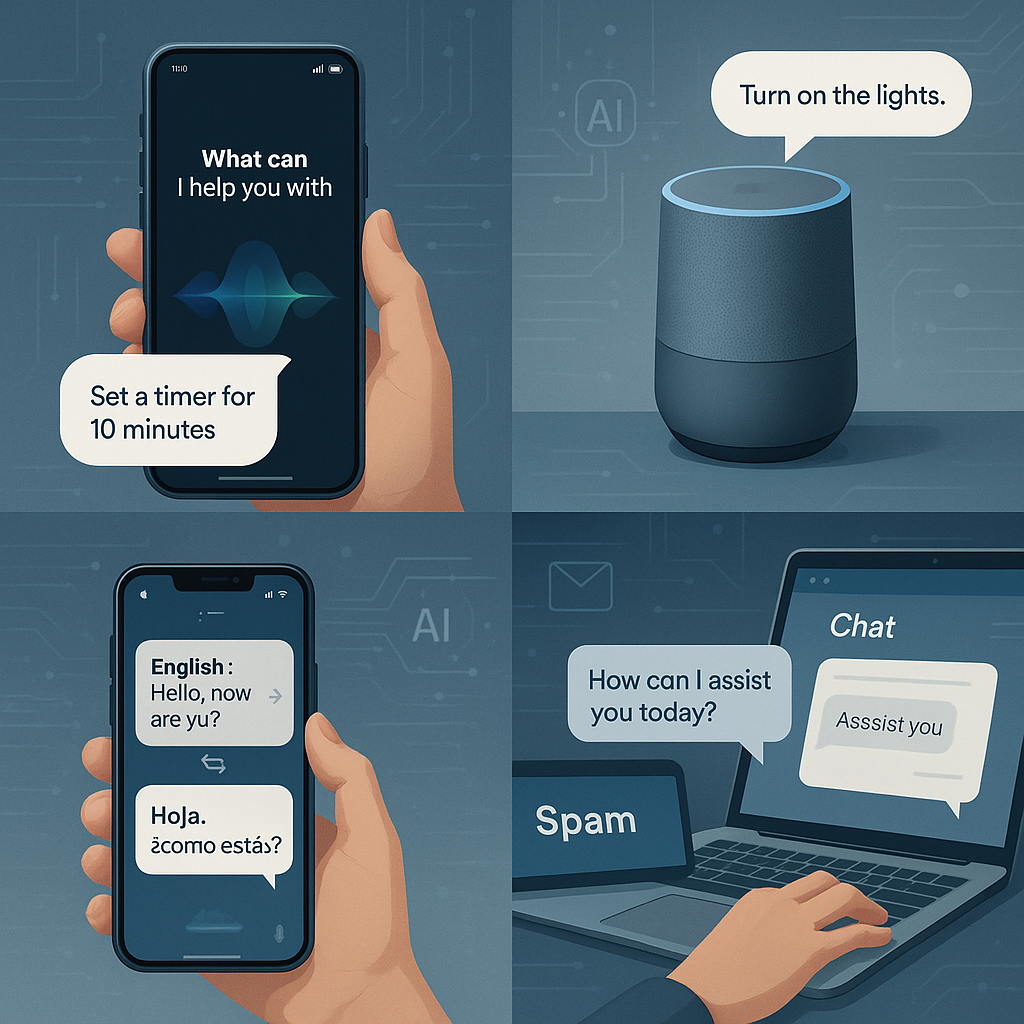Technology’s interaction with us is evolving . We’re going beyond buttons and menus — software now understands our speech and writing. This transformation is due to Natural Language Processing (NLP).
You’ve already experienced NLP if you’ve chatted with a bot seen your sentences auto-correct as you type, or asked your voice assistant to play some tunes.
This blog will explain what NLP really means how it functions, and where you’ll see it in use in everyday software tools.
What Is NLP (Natural Language Processing)?
Natural Language Processing, or NLP in short, is an AI field that enables machines to understand and work with human language — just like we do.
NLP gives computers the ability to read, interpret, and respond to what we say or type, whether it’s written or spoken.
How NLP Works (Simplified)
Here’s an easy way to think about it:
- Input – You talk or write something (like “How’s the weather today?”).
- Understanding – The system splits your words into parts to grasp your meaning.
- Action – It searches for the correct answer or response.
- Output – It displays a reply (like “Today’s forecast shows sun with a high of 26°C”).
This entire process happens behind the scenes — in a matter of seconds.
NLP Uses in Software Today
Let’s explore how NLP makes your digital experience better right now. These aren’t future concepts — they’re already in action.
1. Clever Chatbots and Help Assistants
Lots of websites nowadays use chatbots to give customers immediate help. These bots don’t just stick to scripts — NLP allows them to grasp questions and respond.
💬 Example: Online shops use bots to answer “Where’s my order?” or “Do you have this in blue?” — without needing a human.
📌 Why it matters: Round-the-clock quick support, with no long waits.
2. Voice Assistants That Get You
Gadgets like Alexa, Siri, and Google Assistant depend on NLP to grasp your voice and carry out your requests.
🎙️ Example: You tell your device, “Remind me to call Mom at 6,” and it creates a reminder. This shows NLP in action.
📌 Why it’s important: It simplifies daily tasks — quick and without using your hands.
3. Auto-Correct, Suggestions & Grammar Checks
Have you noticed your email proposing the next sentence? Or fixing your spelling as you type? That’s NLP helping you write.
📝 Example: Gmail’s Smart Compose or Microsoft Word’s grammar tools.
📌 Why it’s important: It saves you time and helps you express yourself more.
4. Understanding Sentiment in Reviews or Comments
Companies often use NLP tools to look through reviews and social media to get a sense of how people view their product or brand.
📊 Example: A tool might tell a company: “Out of 5,000 reviews, 82% are positive.”
📌 Why it matters: It gives businesses quick feedback from actual users.
5. Speech-to-Text in Real-Time
You might not want to type everything. NLP helps turn your voice into text — right away.
🗣️ Example: Tools like Otter.ai or Google Docs voice typing.
📌 Why it matters: Useful for meetings, interviews, or people with disabilities.
6. Better Search Results and Recommendations
NLP helps search engines and apps grasp your intended meaning, not just your typed words.
🔍 Example: When you type “movies like Inception,” you get suggestions that match the style, not just the title.
📌 Why it matters: You get smarter results customized to what you want.
7. Language Translation Made Easy
NLP drives translation tools that allow people to communicate across languages — right away and .
🌐 Example: Google Translate, or YouTube’s automatic subtitles in several languages.
📌 Why it matters: It removes communication obstacles in a global world.
8. Summarizing Long Texts
Some NLP tools can read a lengthy document and provide you with a brief summary — like a TL;DR.
📄 Example: AI writing tools that sum up articles, research papers, or legal documents.
📌 Why it matters: It saves time and makes complex information easier to understand.
Why NLP Has Such Importance in Today’s Software
In a nutshell: NLP makes software feel more natural, useful, and human-like.
Instead of typing commands or clicking through menus, users can speak or type in their usual way, and the software gets it. This boosts accessibility, cuts down on time, and makes tech simpler for everyone — from beginners to experts.
